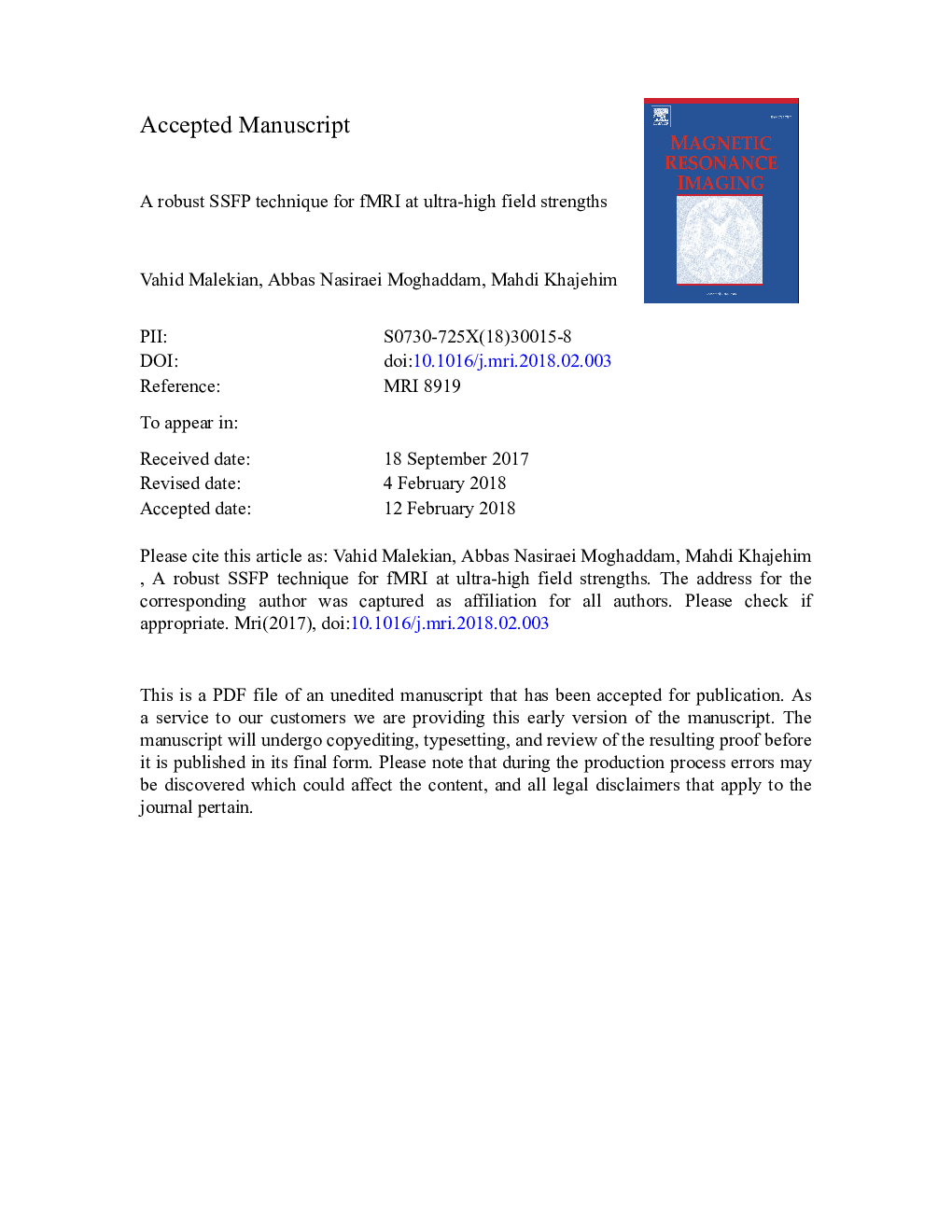| Article ID | Journal | Published Year | Pages | File Type |
|---|---|---|---|---|
| 8159815 | Magnetic Resonance Imaging | 2018 | 31 Pages |
Abstract
A non-balanced (nb) SSFP-based fMRI method based on CE-FAST is presented to alleviate some shortcomings of high spatial-specificity techniques commonly used in high static magnetic fields. The proposed sequence does not suffer from the banding artifacts inherent to balanced (b) SSFP, has low geometrical distortions and SAR compared to spin-echo EPI, and in contrast to previous nbSSFP implementations, is applied at a TR, theoretically prescribed for the optimum contrast. Its non-balanced gradient was chosen to just dephase the unwanted signal component (2Ï dephasing per TR per voxel). 3D data were acquired from nine healthy subjects, who performed a visual-motor task on a 7 Tesla scanner. For comparison, experiments were accompanied by similar bSSFP and spin-echo acquisitions. Consistent activation was achieved in all subjects with theoretically optimal TR, in contrast to previous nbSSFP techniques. The signal stability as well as relative and absolute functional signal changes, were found to be comparable with bSSFP and spin-echo techniques. The results suggest that with suitable modifications, CE-FAST can be regarded as a robust SSFP-based method for high spatial specificity fMRI techniques.
Keywords
Related Topics
Physical Sciences and Engineering
Physics and Astronomy
Condensed Matter Physics
Authors
Vahid Malekian, Abbas Nasiraei-Moghaddam, Mahdi Khajehim,
